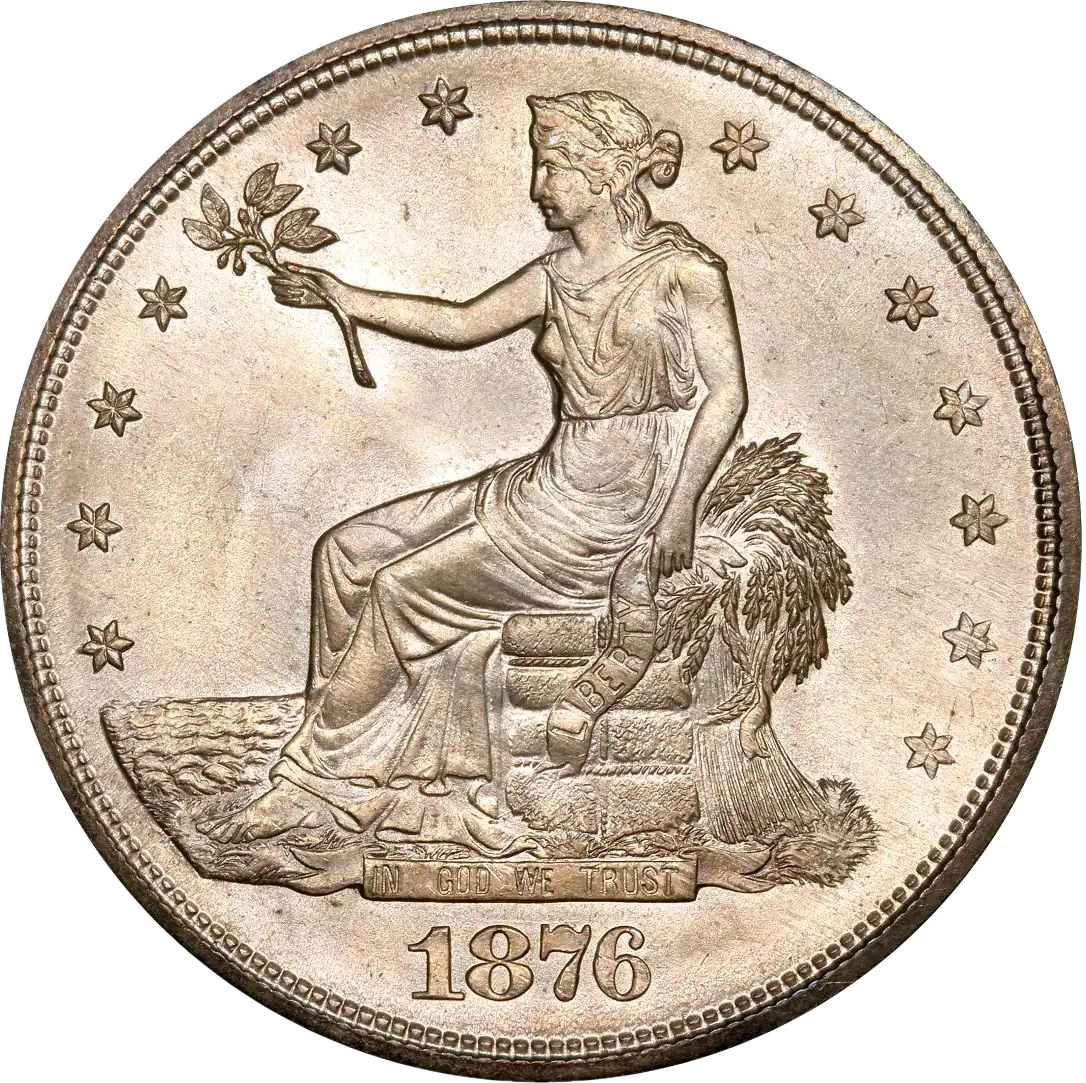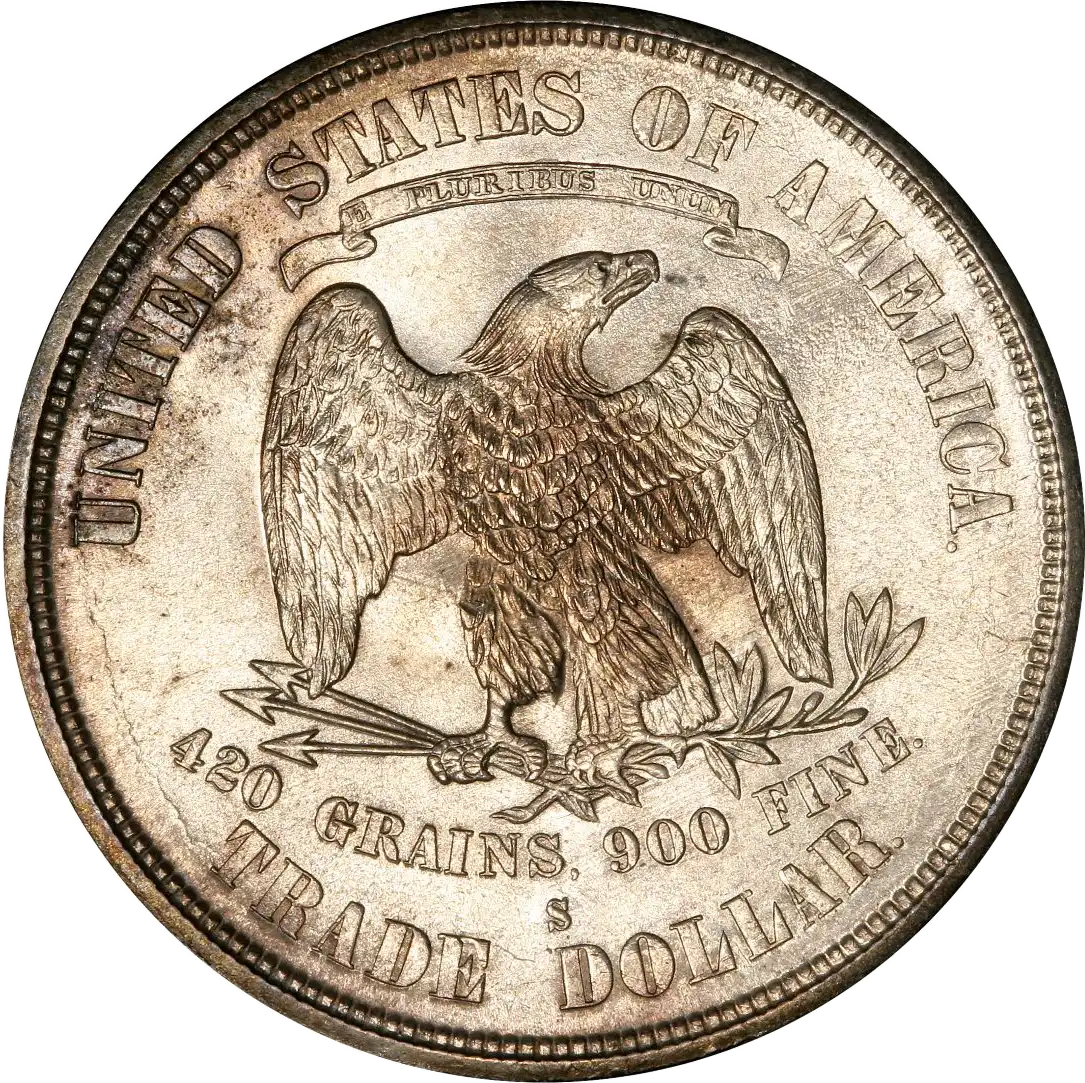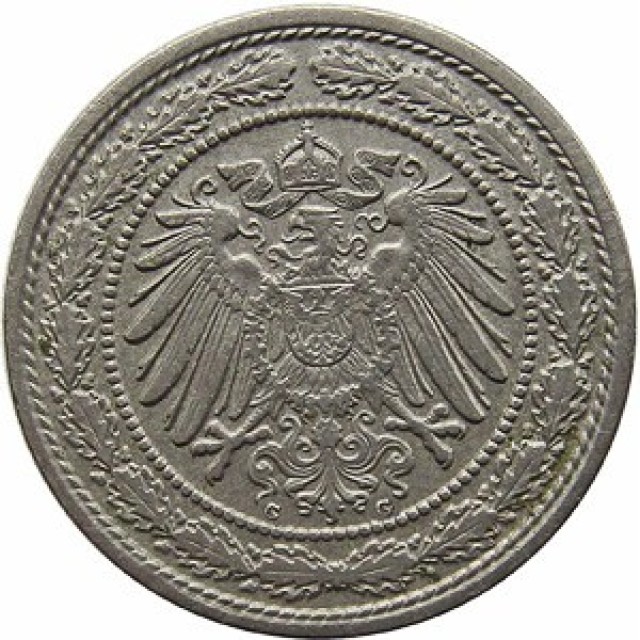USA 1 dollar Trade Dollar 1876-S
USA, San Francisco


Rarity
Common
Attributes of Coins
| Melt Value | $39.71 24.498g Silver |
|---|---|
| Region | USA |
| Denomination | 1 dollar |
| Krause number | KM# 108 |
| Mintage | 5,227,000 |
| Metal | Silver 0.900 |
| thickness | 3 mm |
| diameter | 37.8 mm |
| weight | 27.22 g |
Obverse:

Liberty
People
Star
Creators:
William Barber
IN GOD WE TRUST
LIBERTY
Reverse:

Bird
Coat of arms
Creators:
William Barber
420 GRAINS. 900 FINE.
E PLURIBUS UNUM
TRADE DOLLAR
UNITED STATES OF AMERICA
Introduction of Coins
This issue represented the largest emission of trade dollars to date. In all likelihood many of these coins were produced for the benefit of those profiteering on the discrepancy between the trade dollar's intrinsic value, which was steadily falling, and its face value as a legal tender dollar. When Congress revoked the trade dollar's monetary status in July to address such abuse, the effect was negligible. Most persons didn't know the legal intricacies and just saw it as a silver dollar. Banks and businesses were left holding the bag as these now-unredeemable coins continued to pile up in inventory. Mint State 1876-S trade dollars of mediocre quality are reasonably plentiful, this being one of the most common issues in the series. Gems are rare, and choice pieces are fairly scarce. The collecting of trade dollars by date and mint was essentially unknown it their own time, so the survival of high grade examples was merely a matter of chance. With so many dies needed to strike more than five million 1876-S trade dollars, it's not surprising that several interesting varieties are known. Of three mintmark sizes reported for this issue, the vast majority have a Large S. The Micro S is quite scarce, while a Medium S has been reported but remains uncertain. At least two doubled-die obverse varieties are known, both being of the Type 2 hub and paired with Type 2 obverse dies. A repunched date variety is also popular and shares this 2//2 hub combination. The 1876-S trade dollar may be found in Type 1//1 and 1//2 combinations, as well, the first of these being the most common.
Read More












